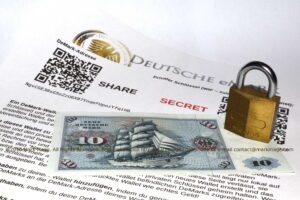 Bitcoin and other Crypto currencies allow users to Be Their Own Bank, but being foolish or lax with security can prove very dangerous for those bankers-to-be. We explain how advanced users keep their Crypto coins safe and introduce tools and services available for Bitcoin and other Crypto currency owners.
Bitcoin and other Crypto currencies allow users to Be Their Own Bank, but being foolish or lax with security can prove very dangerous for those bankers-to-be. We explain how advanced users keep their Crypto coins safe and introduce tools and services available for Bitcoin and other Crypto currency owners.
Best and Safest Way
Despite what the media — and even mainstream bitcoiners, or at least the loudest ones! — keep telling you, the best solution is not the Trezor wallet or any other gadgetty hardware solution, however neat it may look. Don’t fall for shiny object syndrome here. The best way is a, literally, not at all shiny one — namely a simple paper wallet.
What Is a Paper Wallet, Anyway?
A paper wallet is a simple piece of paper, printed out on any computer printer (but preferably one without WiFi or any other smart or wireless capabilities — the dumber the better)! What’s not quite as simple about paper wallets is the underlying cryptography as well as other technological aspects involved. As a Crypto user, you do not have to worry about any of these though.
How You Do This
In fact, you do not have to stress out over any of the things happening in the background, The only thing you need to do is properly generate your paper wallet. Basic steps for this involve loading a paper-wallet generator website for your coin, disconnect your computer (and printer) from the internet (also turn off WiFi or any other local wireless connections that might act as a backdoor), then move your mouse around to create randomness (usually your progress is displayed on your screen), and print out your resulting paper wallet (or list of key pairs, depending on which format or type you have chosen).
Make Sure to Do This Properly — and Safely
Also make sure to put away all cellphones with cameras to also prevent these from eavesdropping; nobody must except you see your private-key portion on that paper you print! It’s also a good idea to fold over your paper wallets immediately, private key down. Afterwards, you may re-connect your devices, strip off any tape over cameras or what not.
That’s it — you now have a paper wallet. Note that different coins have different wallets (following from the different encryption mechanisms and other Block-index features of the different coins). You don’t have to worry about that either, but only make sure you follow the obvious steps of using the proper wallet generator for the coin you want to store.
